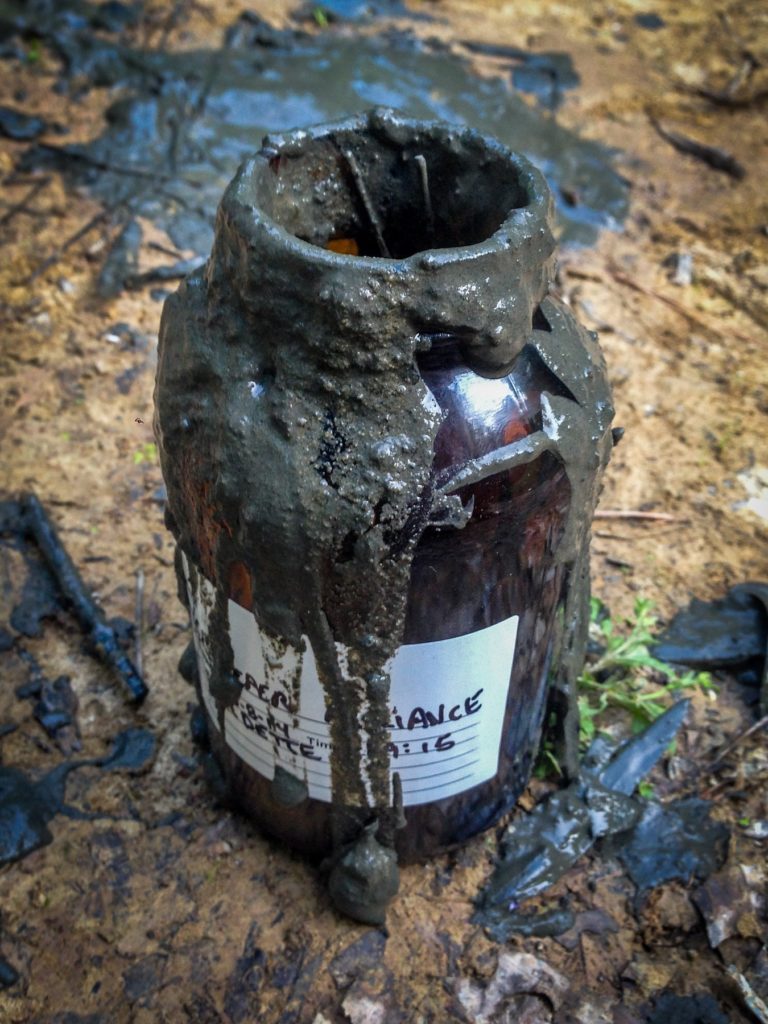Duke Energy’s Plans for Coal Ash Dumps Threaten Indiana’s Great Rivers, Underground Water Supplies
By: Waterkeeper Alliance

The company’s plan to leave toxic waste in place will cause contamination
State and national public interest groups are calling on Indiana environmental officials to reject Duke Energy’s plans to bury millions of tons of toxic coal ash waste in unlined dumps next to major rivers at four Indiana power plants.
“The utility’s plan clearly fails to protect the environment and people’s health from dangerous contamination leaking off the sites,” said Dr. Indra Frank, environmental health and water policy director for the Hoosier Environmental Council. “The waste contains lead, arsenic, and chromium, among other toxics, and it should be prevented from continuing to leak into Indiana waters.”
Indiana regulations require Duke Energy to prepare closure plans for its 20 coal ash lagoons at the Cayuga, Gallagher, Gibson and Wabash River Generating Stations, many of which are leaking and located in the Wabash and Ohio River floodplains. For the vast majority of those unlined lagoons, Duke has proposed “cap-in-place” closure, which means the toxic coal ash waste would be covered and left sitting in place – often soaking below the water table – with no barrier between the ash and the shallow aquifers that adjoin the Wabash and Ohio Rivers. A safer alternative to cap-in-place closure is to excavate the ash and transfer it to dry, lined landfills located away from rivers and groundwater – an approach Duke calls “clean closure.”
Duke’s plans for its Indiana lagoons fail to even consider the clean closure option, although the company is moving towards clean closure at plants in South Carolina and North Carolina.
Duke Energy became the country’s most notorious coal ash polluter in 2014 when the utility caused a massive spill of up to 39,000 tons of ash and 27 million gallons of coal ash wastewater in North Carolina, fouling a 70-mile stretch of the Dan River. Duke pled guilty to nine criminal counts related to the spill and to water contamination discovered at every one of the company’s 15 coal plants in the Carolinas.
“Duke Energy should learn from its mistakes,” said Waterkeeper Alliance attorney Pete Harrison. “Instead, the company is trying to abandon its coal ash in leaky pits next to Indiana’s biggest rivers, where it will endanger people, fish, and the rivers for decades to come. The Indiana Department of Environmental Management should reject Duke’s inadequate plans and require safer technology.”
Professional geologist Mark Hutson reviewed several of Duke’s closure plans and concluded that they would likely allow contamination to continue leaking out of the ash dumps. “The key to successful disposal of coal ash is to keep the ash dry,” Hutson wrote. “Wherever the bottom of the ponds is located below the normal groundwater elevation, groundwater will continue to flow through the ash and generate leachate.”
“Duke’s plans are a prescription for continued pollution at these sites, where the company’s own water sampling reveals serious groundwater contamination is already occurring,” said Jenny Cassel, Coal Program project attorney for Earthjustice. “What’s more, Duke has offered no plan for how it will contain and clean up this contamination.” Duke’s sampling data at its Cayuga Plant, for example, reveals high levels of selenium, a toxic metal that is deadly to fish in low concentrations, are leaking into the Wabash River from its unlined dump.
“At the Cayuga, Wabash River, Gallagher and Gibson coal ash dumps, millions of tons of ash are literally sitting in the underlying groundwater, which guarantees contamination,” noted Tim Maloney, HEC’s senior policy director. “This also puts the neighboring rivers at risk, since there is a natural exchange of flow between rivers and the adjacent groundwater systems, as well as the constant threat of floodwaters overflowing and threatening a catastrophic spill of the toxic ash.”
In 2009 Duke Energy installed an 8-mile-long water supply line to replace drinking water wells in East Mt. Carmel, Indiana contaminated by the leaking ash lagoons at the Gibson Generating Station.
The Indiana Department of Environmental Management will review Duke’s coal ash closure plans and determine if they comply with federal and state standards, including requirements to accurately characterize the extent of existing contamination, demonstrate that the closed coal ash dumps will be structurally sound, and provide for long-term, post-closure care that prevents future pollution.
“Besides calling on IDEM to reject Duke’s incomplete and unsound closure plans, we are also urging that Duke be required to prepare a comprehensive benefit-cost analysis that examines alternatives to the “closure in place” option, such as moving the coal ash to modern, lined landfills away from the rivers’ floodplains. At every site Duke chose the cheapest option in the short-term, but failed to consider the high cost of cleaning up the pollution that is sure to result from simply covering the ash dumps in place,” said Sierra Club Hoosier Chapter Director Bowden Quinn. “Keeping the toxic ash away from water is the only proven way to prevent contamination.”
The Hoosier Environmental Council, Sierra Club Hoosier Chapter, Citizens Action Coalition, Knob and Valley Audubon Society, Earthjustice and Waterkeeper Alliance all provided comments to the IDEM.